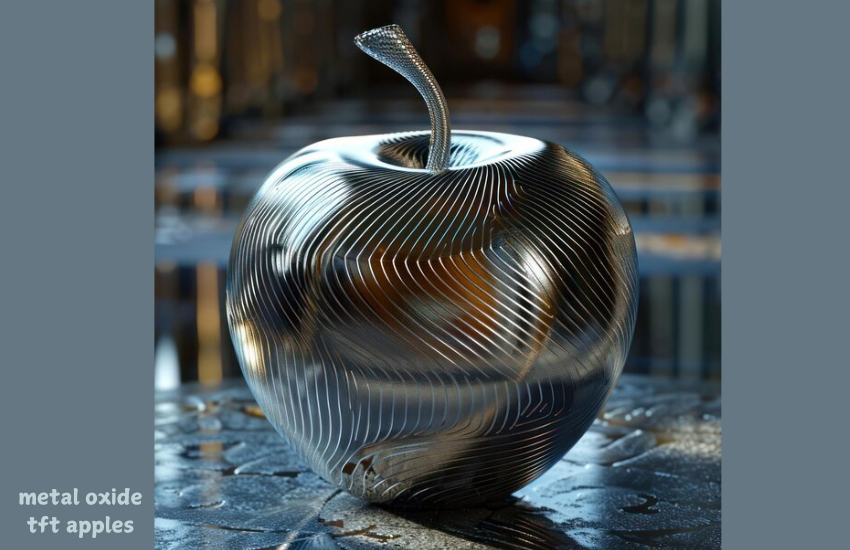The transition from conventional TFTs to metal oxide TFTs in industries like consumer electronics, especially in Apple devices, represents a shift towards more efficient, durable, and high-performance display technologies. The use of metal oxides in TFTs allows manufacturers to produce sharper, more vibrant screens while maintaining energy efficiency.
Metal Oxide TFT vs Traditional TFT
Differences Between Metal Oxide TFT and Si TFT:

Advantages of Metal Oxide TFT:
- Higher Electron Mobility: Improves display speed and responsiveness.
- Lower Power Consumption: Enhances battery life, critical for mobile devices.
- Superior Transparency: Allows for clearer, more vivid displays.
Limitations of Metal Oxide TFT:
While metal oxide TFTs outperform traditional models in many areas, they do come with some challenges. Cost and difficulty in manufacturing are two major drawbacks, as the production process can be complex and resource-intensive.
Key Applications of Metal Oxide TFTs
Displays in Consumer Electronics:
Metal oxide TFT technology has been instrumental in developing high-end displays for smartphones, tablets, and laptops. They are now essential in delivering high refresh rates and vivid color accuracy, critical for media consumption and gaming experiences.
Use in Wearable Devices:
Wearables, such as smartwatches, also benefit from this technology due to its low power consumption, which extends battery life while maintaining the high-resolution demands of smaller screens.
Integration with Flexible Electronics:
Another area where metal oxide TFTs shine is in flexible electronics. Their ability to perform well on flexible substrates makes them ideal for foldable devices, a growing trend in the tech industry.
The Role of Metal Oxide TFT in Apple Devices
Application in Apple iPhones:
Apple has been an early adopter of advanced display technologies, and metal oxide TFTs play a crucial role in enhancing iPhone displays. These transistors ensure that the iPhone’s screen offers vivid colors, deep contrasts, and energy efficiency, all while maintaining Apple’s trademark fluid touch response.
Use in Apple Watches:
In wearables like the Apple Watch, metal oxide TFTs contribute to improved power efficiency, ensuring longer battery life—a critical feature for devices worn throughout the day.
Potential for Future Apple Products:
As foldable and flexible devices continue to emerge, metal oxide TFTs are poised to become a vital component in Apple’s future product lines, potentially appearing in iPads or even MacBooks.
How Metal Oxide TFT Improves Display Quality
Enhanced Resolution and Clarity:
The higher electron mobility in metal oxide TFTs allows for finer control over pixel elements, resulting in sharper, more precise image quality. This means more detail and clearer text, which is essential for high-definition displays.
Power Efficiency Benefits:
Metal oxide TFTs consume less power, which has a direct impact on extending the battery life of portable devices, a crucial factor for users of smartphones, tablets, and wearables.
Impact on Color Accuracy:
Due to their superior transparency and ability to maintain consistency in electron mobility, metal oxide TFTs deliver better color accuracy, which is vital for users who rely on their devices for creative work or media consumption.

Manufacturing Metal Oxide TFT Displays
Production Process of Metal Oxide TFTs:
The production process for metal oxide TFTs involves the deposition of metal oxide thin films on a substrate, followed by patterning and etching to create the transistor structure. The process is more complex than traditional silicon-based TFTs, which can make scaling up production difficult.
Material Composition:
IGZO (indium gallium zinc oxide) is the primary material used in metal oxide TFTs. This material offers excellent performance characteristics but can be costly and challenging to source in large quantities.
Challenges in Large-Scale Production:
One of the biggest hurdles in adopting metal oxide TFTs on a large scale is the cost and complexity of the production process. Developing reliable manufacturing techniques for large screens while maintaining yield rates remains a significant challenge for the industry.


